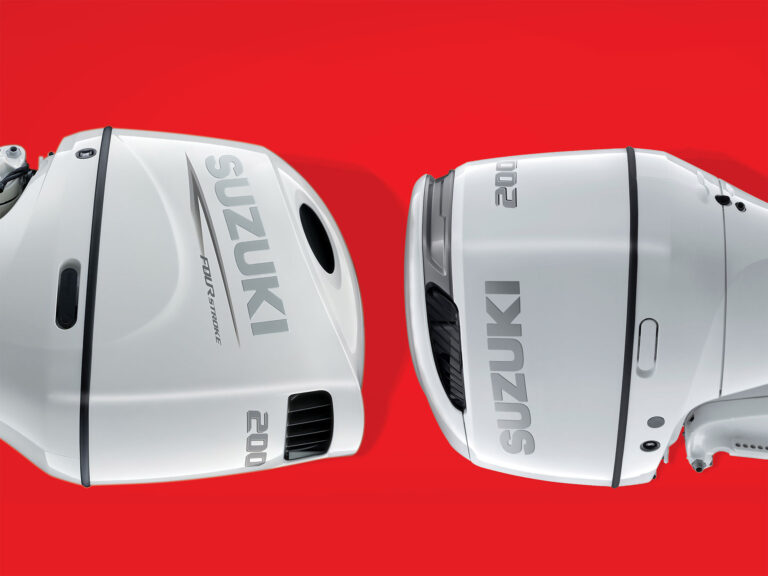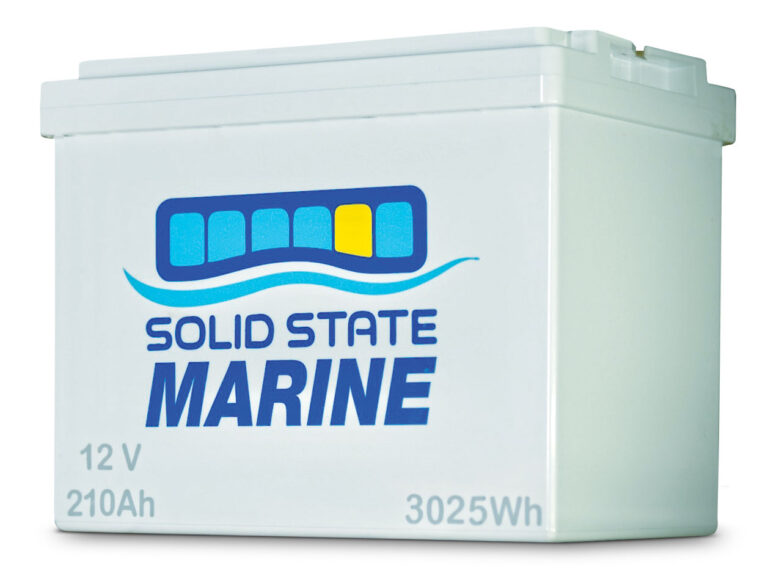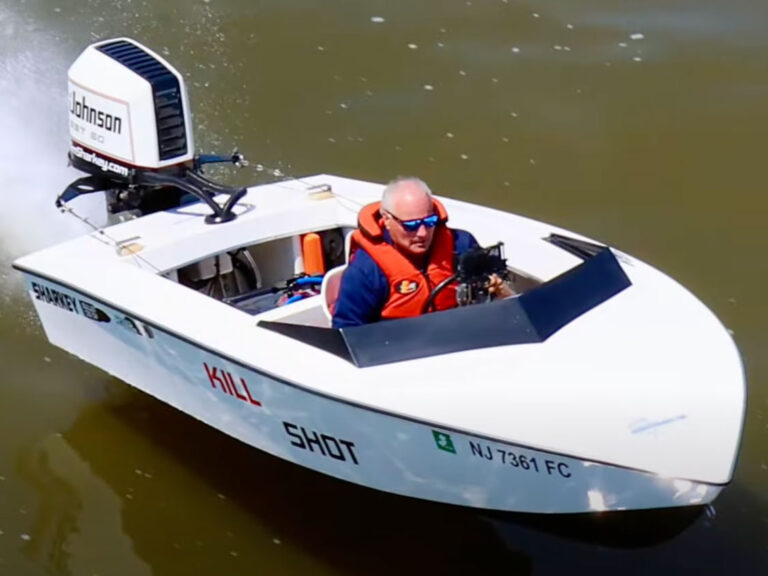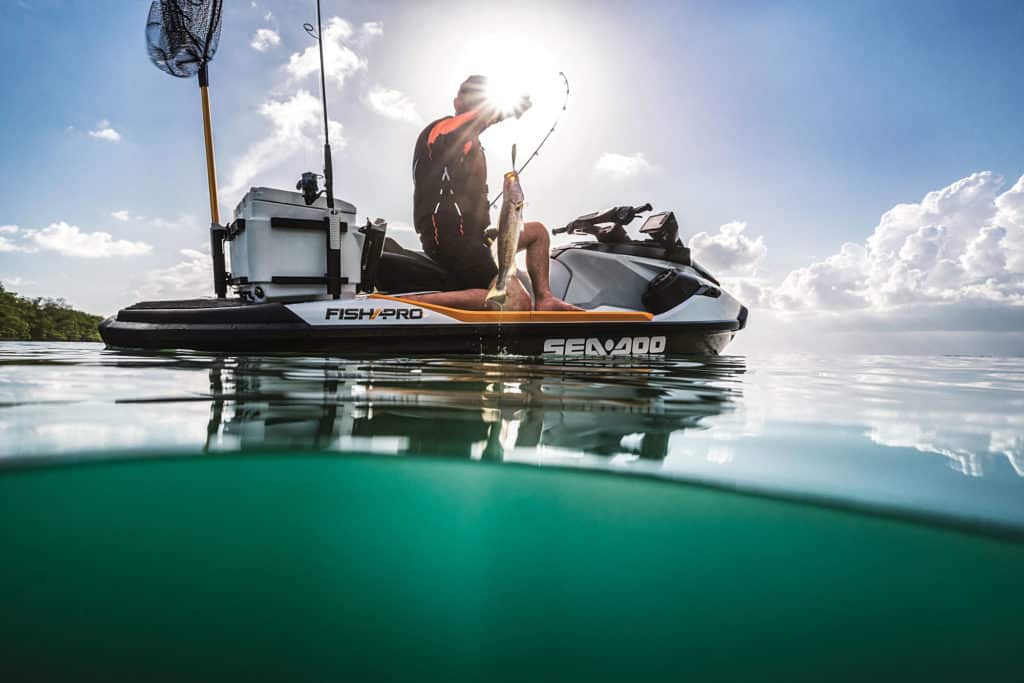
The tide coursing through Sebastian Inlet moved at a steady, uniform pace, the surface of the water uninterrupted, save for the occasional rolling wake from a passing boat. I stood at the helm and looked over the bow, hoping to see signs of life. Suddenly, over 100 yards away, I noticed the water start to percolate like morning coffee, and then explode in a shower of scattering, panicked bait. Fortunately, I happened to be on a nimble PWC, so I sat down, hit the throttle, and rocketed toward the busting fish in a matter of seconds. I popped the PWC into neutral, grabbed a rod from a holder behind me, and cast toward the boil. I frantically cranked the reel handle until a healthy jack crevalle mistook my lure for a fleeing baitfish and attacked it. As it started peeling line from my spinning reel, I developed an instant appreciation for fishing from a Sea-Doo Fish Pro.
For years, fishing from a PWC has had a cult following, with inveterate anglers creating all sorts of aftermarket gear to rig their conventional PWCs for fishing purposes. (We wrote about this phenomenon in our September 2016 issue.) With center-consoles and traditional fishing boats growing ever more expensive, the idea of fishing from a less costly PWC has gained acceptance. Sea-Doo capitalized on this trend to produce the Fish Pro, designed and accessorized specifically to fish. To prove its mettle, Sea-Doo invited us on a fishing trip, and we accepted the challenge.
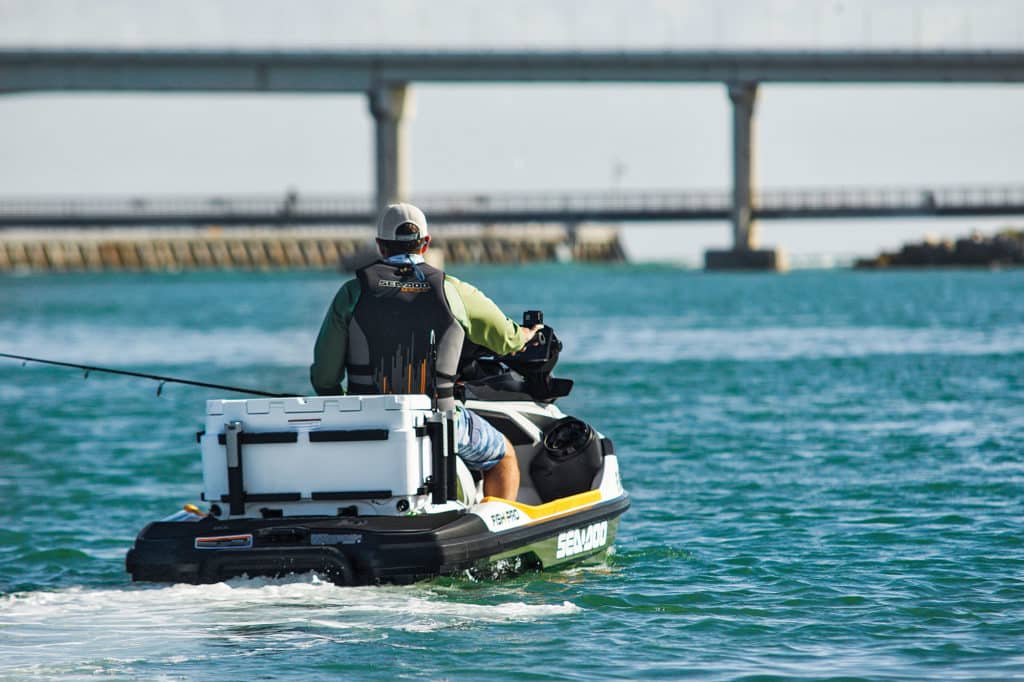
Outside the Inlet
Before sunrise, fellow editor Jeff Hemmel and I met Tim McKercher, Sea-Doo’s marketing guru, at the launch ramp. We dropped in a trio of Fish Pros and started toward the inlet at first light. Our original intent was to head offshore to hunt for a weed line and set up a trolling pattern. Mother Nature had other plans. A front had kicked up, stacking 4- to 6-footers outside the inlet and churning up the offshore waters. Still, when we arrived at the inlet, we pointed our bows into the swells to poke around offshore. While it may seem that a small craft like a Fish Pro would fare poorly in rougher seas, its slender design and nimble handling made a pretty good platform for handling offshore swells. I found it easy to goose the throttle and time the ride with the waves to lessen the pounding.
Of course, by taking a PWC into rougher water, we were 100 percent guaranteed to get wet. Thankfully, I had on a quick-drying technical fishing shirt and boardshorts, so I didn’t care. The main risk of taking a PWC into big water, though, is getting knocked off your craft. Donning life jackets and clipping on the kill switch are mandatory, as is being extra vigilant in the waves. Fishing in these conditions would be way less than ideal.
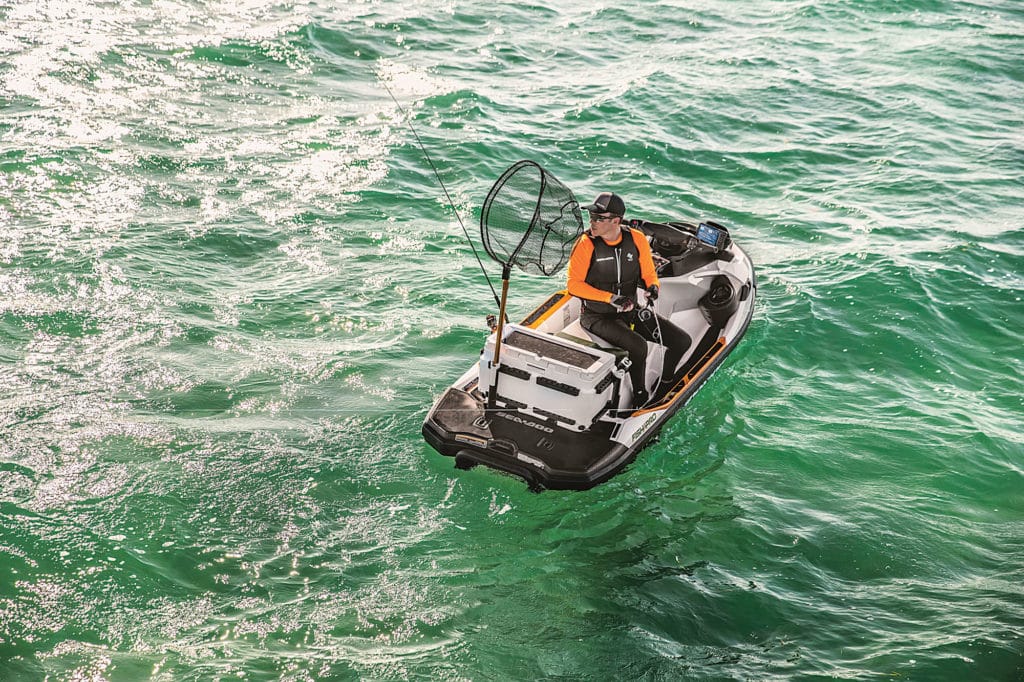
Fortunately, we had a Plan B. McKercher, who grew up in the area, knew we could troll inside the inlet for snook, large redfish, or whatever else might be around. So we turned our fleet about and headed back into protected waters on the inland side of the bridge. And with that, we got to experience everything the Sea-Doo Fish Pro has to offer.
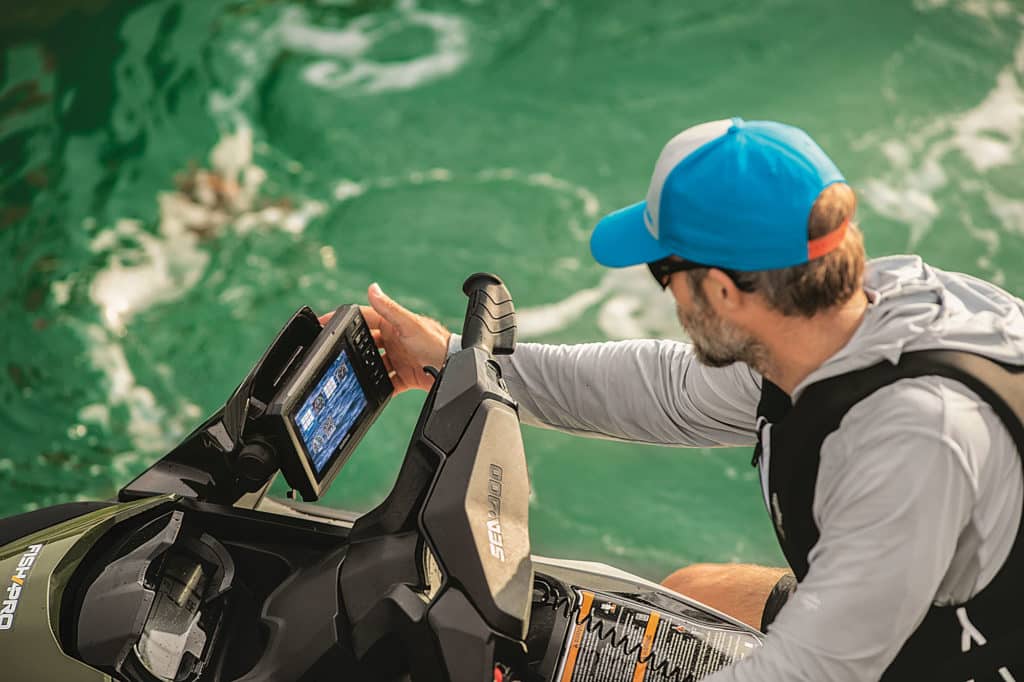
Fishy Features
Sea-Doo based the Fish Pro on one of its typical three-seater PWCs and adapted it specifically for fishing. It’s based on Sea-Doo’s ST3 hull, which is a wider, more stable platform ideally suited for fishing. It has a sharp V at the bow tapering to a 22-degree deadrise that helps it slice through waves and rough water. It also has hard chines to improve stability and control. A second chine offset higher on the hull acts as a stabilizer when the craft is idling or at rest, which is great for trolling or if you decide to stand and cast. The extended aft deck only further enhances its stability while providing a platform for casting at rest. Sea-Doo also engineered the Fish Pro with a lower center of gravity, making it more stable than comparable recreational models.
We got to test the benefits of Sea-Doo’s hull modifications during our jaunt outside the inlet, and also when we set up a trolling pattern on the inside. Sea-Doo added a trolling mode into its in-dash control system that has nine different settings. Using the standard Garmin EchoMap Plus 62Ccv fish finder, I found the shelf along the edge of the channel, set the proper trolling speed, and set out a line behind me.
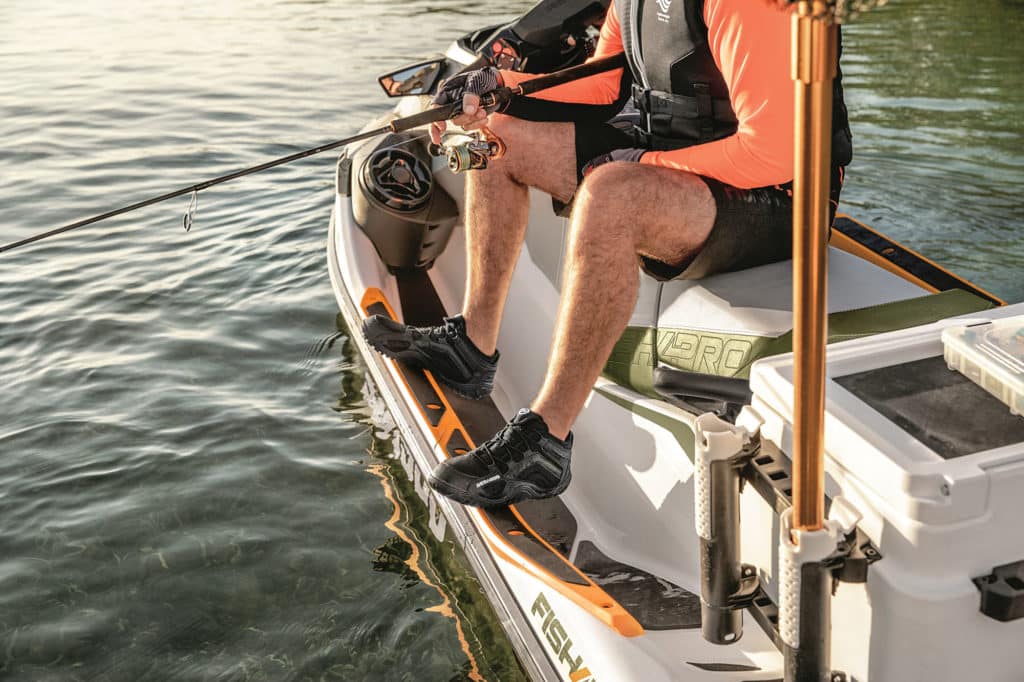
As I trolled along the shelf, hoping for a quick strike, I took note of the other fishing features that Sea-Doo added to make the Fish Pro super-fishy. For one, it increased the fuel capacity from 15 gallons to 18.5 gallons to extend its range. It also created a 13.5-gallon cooler that connects aft with Sea-Doo’s proprietary LinQ Quick Latch mounting system. The cooler features an inset top that serves as a bait-prep station or a spot to handle all your tackle and gear. It also has built-in rails along its sides that let you adjust the position of your rod holders. In addition, the footwells along the hull sides are angled outward and topped with nonslip to serve as comfortable footrests if you turn sideways to cast or fight a fish.
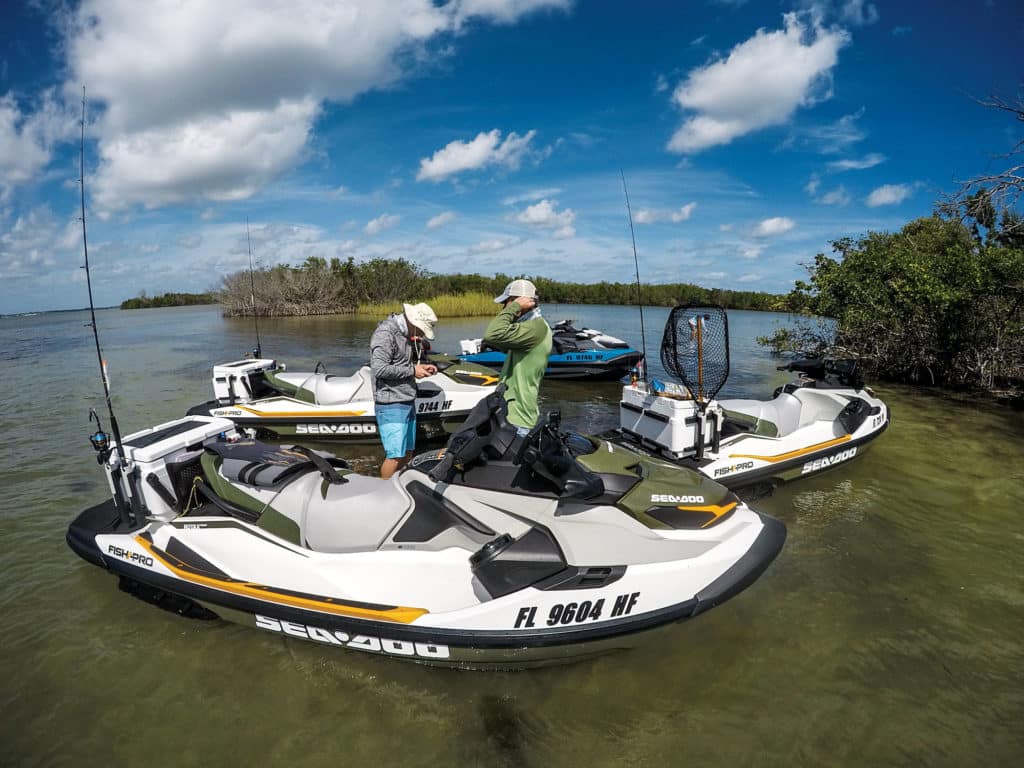
All of these features came into play when I stopped trolling and noticed the waters around us start to boil.
Running-and-Gunning
As the spirited jack crevalle ran off with my lure and doubled over my rod, the outgoing tide swiftly started to carry me toward the pilings of the bridge spanning the inlet. Fortunately, I could leave the Fish Pro idling as I battled the fish, with no prop in the water in danger of cutting or entangling my line, so I simply sat down and used my free hand to goose the throttle and move back up-current, out of harm’s way. Those angled footrests proved useful as I leaned over to handle the fish and release it back into the water.
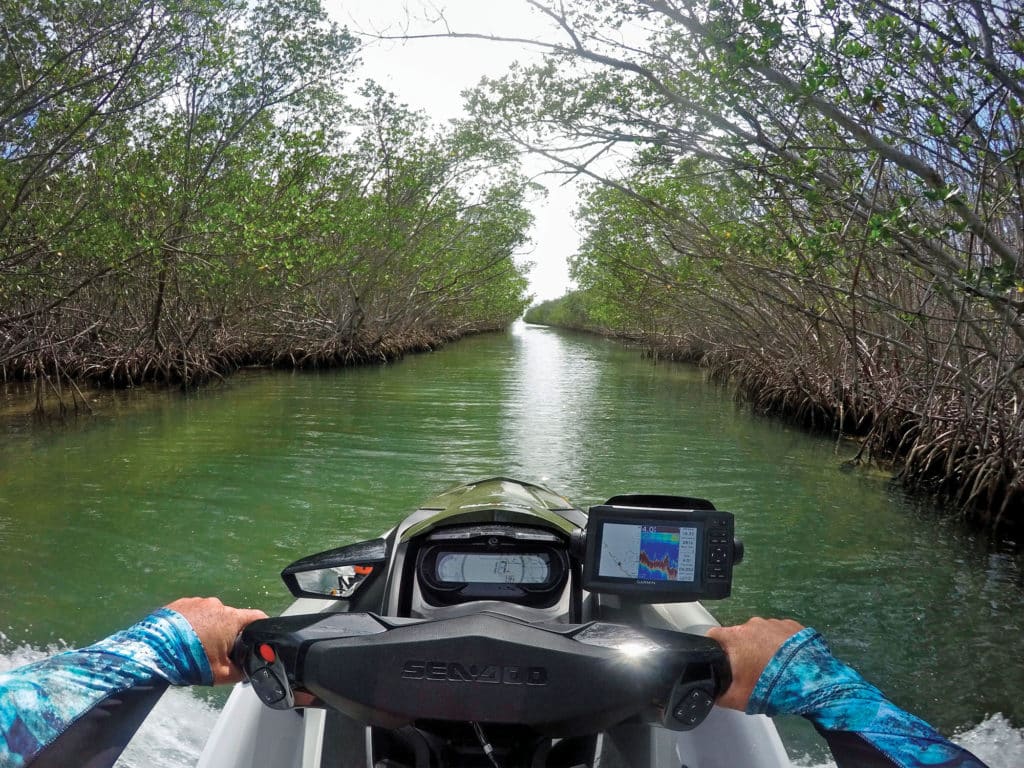
When I returned to the saddle and idled farther back inside the inlet, I noticed McKercher snapping photos as he circled around Hemmel, who had also found the busting jack crevalle and now had his own hooked fish to contend with. I noticed Hemmel follow a similar pattern, fighting the fish and using the throttle to keep himself in safe waters until he landed it.
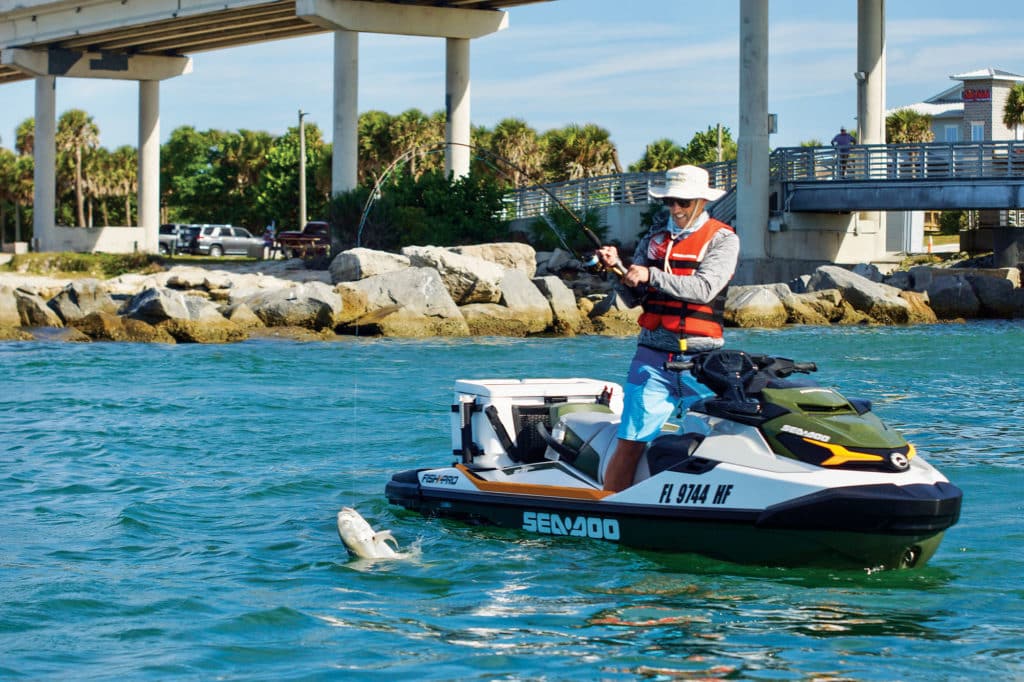
I spend most of my time fishing in the Northeast, and I live for the days when striped bass, bluefish or false albacore pin bait on the surface and slice through them in a blitz situation. It’s one of my favorite times to chase fish. While I enjoyed trying the Fish Pro to troll and drift-fish, chasing after these busting jack crevalle made me appreciate the PWC as a vessel ideally suited for this style of run-and-gun fishing—where the fish pop up in one place and then disappear in seconds, only to resurface in another spot far away from where you’re at.
Read Next: A Hobie Kayak Fishing Adventure
The Fish Pro is small and quick, and displays incredible maneuverability. When I spotted busting fish, I could react more quickly than I’d be able to from the helm of a typical center-console. That meant I could get to the fish and get a rod at the ready before they had a chance to disappear. And if they did, in a matter of seconds I could jump back on the saddle and zip off to where they resurfaced again, ready to cast.
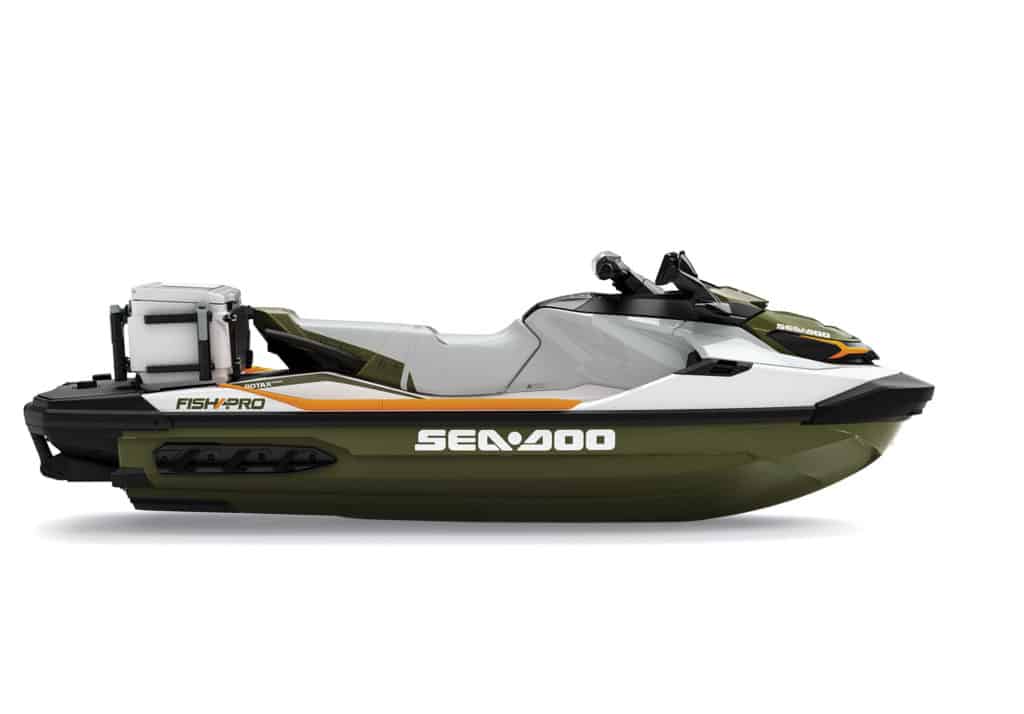
While fishing from a PWC has its downsides—you can’t really fish with a crew aboard, and you need to pick your days to head outside the inlet—it has a lot to offer as a light-tackle platform, especially when it comes to getting on top of the fish and hooking into one before it knows what hit it. Give me a Sea-Doo Fish Pro, and I could do that all day.






